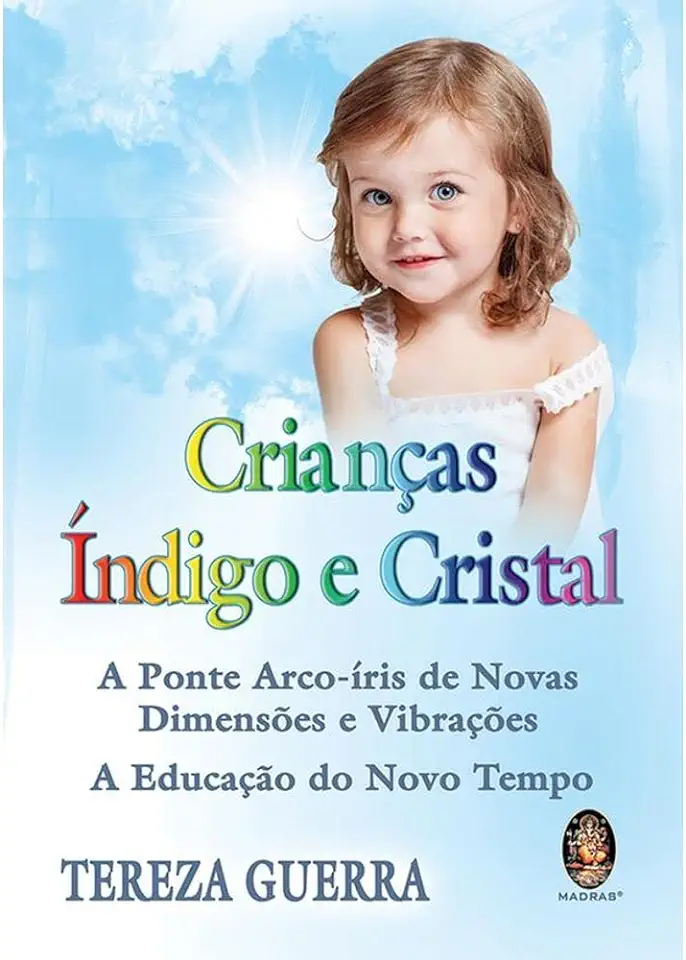
Indigo Children - Tereza Guerra
Indigo Children: A New Generation of Children with Special Gifts
Introduction
In her groundbreaking book, Indigo Children, Tereza Guerra explores the fascinating world of indigo children, a new generation of children who are believed to possess special gifts and abilities. Drawing on her extensive research and personal experiences, Guerra provides a comprehensive overview of the indigo phenomenon, including the characteristics of indigo children, their challenges and strengths, and their role in the evolution of humanity.
Who Are Indigo Children?
Indigo children are a group of children who are believed to be born with a unique set of traits and abilities that set them apart from other children. These children are often highly intuitive, creative, and compassionate, and they often display a strong sense of justice and a desire to make a difference in the world. Indigo children are also often drawn to spiritual and metaphysical topics, and they may have a strong connection to nature.
The Characteristics of Indigo Children
Indigo children exhibit a wide range of characteristics that make them unique. Some of the most common characteristics of indigo children include:
- High intelligence and creativity: Indigo children are often highly intelligent and creative, and they may excel in a variety of areas, such as academics, music, art, and sports.
- Strong intuition and empathy: Indigo children are often highly intuitive and empathetic, and they may be able to sense the feelings and thoughts of others.
- A strong sense of justice and a desire to make a difference: Indigo children often have a strong sense of justice and a desire to make a difference in the world. They may be drawn to social activism, environmentalism, or other causes that they believe in.
- A connection to spirituality and metaphysics: Indigo children are often drawn to spiritual and metaphysical topics, and they may have a strong connection to nature. They may also be interested in meditation, yoga, and other forms of spiritual practice.
The Challenges of Indigo Children
Indigo children can face a number of challenges due to their unique traits and abilities. Some of the most common challenges faced by indigo children include:
- Difficulty fitting in: Indigo children may have difficulty fitting in with their peers due to their unique interests and abilities. They may be seen as "different" or "weird," and they may be bullied or ostracized.
- Academic difficulties: Indigo children may also face academic difficulties due to their unique learning styles. They may be bored by traditional schoolwork, and they may have difficulty paying attention in class.
- Emotional challenges: Indigo children may also experience emotional challenges due to their sensitivity and empathy. They may be easily overwhelmed by their emotions, and they may have difficulty coping with stress.
The Strengths of Indigo Children
Despite the challenges they face, indigo children also possess a number of strengths that can help them to succeed in life. Some of the most common strengths of indigo children include:
- Creativity and innovation: Indigo children are often highly creative and innovative, and they may come up with new ideas and solutions to problems.
- Compassion and empathy: Indigo children are often highly compassionate and empathetic, and they may be able to connect with others on a deep level.
- A strong sense of justice: Indigo children often have a strong sense of justice, and they may be willing to stand up for what they believe in.
- A connection to spirituality: Indigo children often have a strong connection to spirituality, and they may be able to find peace and guidance in their spiritual beliefs.
The Role of Indigo Children in the Evolution of Humanity
Indigo children are believed to play an important role in the evolution of humanity. They are thought to be here to help us to create a more peaceful and sustainable world. Indigo children are often drawn to careers in healing, education, and social activism, and they may use their unique gifts and abilities to make a positive impact on the world.
Conclusion
Indigo Children is a fascinating and thought-provoking book that provides a comprehensive overview of the indigo phenomenon. Tereza Guerra draws on her extensive research and personal experiences to provide a wealth of information about indigo children, their characteristics, their challenges, and their strengths. This book is a must-read for anyone who is interested in learning more about indigo children and their role in the evolution of humanity.